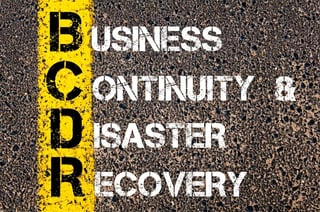 Have you heard about Disaster Recovery as a Service (DRaaS)? It’s a hot new buzzword, but is simpler than it sounds. If you want to keep your organization’s data safe from threats, both criminally perpetuated and natural, read on to find out why you should invest in DRaaS today.
Have you heard about Disaster Recovery as a Service (DRaaS)? It’s a hot new buzzword, but is simpler than it sounds. If you want to keep your organization’s data safe from threats, both criminally perpetuated and natural, read on to find out why you should invest in DRaaS today.
What is Disaster Recovery as a Service?
Disaster Recovery as a Service is a solution that involves the replication of company servers by a third party cloud provider to restore and recover information that’s critical to business processes in the event of an incident, whether in the form of a cyber breach or natural disaster. It helps to prevent unplanned downtime and keep the business “always on.”
According to Tech Target, “With Disaster Recovery as a Service, the time to return applications to production is reduced because data does not need to be restored over the internet. DRaaS can be especially useful for businesses that lack the necessary expertise to provision, configure, and test an effective disaster recovery plan. Using DRaaS also means the organization doesn't have to invest in - and maintain - its own off-site DR environment.”
3 Steps to Consider Before Deploying DRaaS
Is Disaster Recovery as a Service right for every enterprise? Luckily, this approach can be customized for nearly all types of organizations; the important part is getting it right. In Network World’s article, they map out three crucial considerations before implementing DRaaS. These include:
- Determine Your Organization’s Tolerance for Downtime
Unfortunately, downtime events are increasing globally, leading to lost productivity and revenue. According to one 2016 report, enterprise organizations experienced an average of 15 unplanned downtime events when compared to the prior year’s 13 events. Downtime for mission-critical applications rose to an average of 1.9 hours vs. 1.4 hours. Downtime for non-mission-critical applications lasted an average of 5.8 hours vs. the prior year’s 4.0 hours.
Network World explains, “With so much to offer, DRaaS has a bright future in the BC/DR realm. Companies with no tolerance for downtime, those looking to enter the cloud for the first time, those seeking a complete DR solution and those that have infrastructure in severe weather risk locations are interested in DRaaS. DRaaS is particularly interesting to enterprises with minimal tolerance for downtime.”
- Be Sure to Consider All Options
There’s an obvious market need for DRaaS, especially in a digital world filled with cyber threats and informational breaches. To help combat these concerns, DRaaS serves to replicate your organization’s infrastructure, applications and data, copying the information to the cloud, at a relatively low cost. However, since DRaaS is still a young technology, be sure to consider all available options and service providers to ensure the right fit for your enterprise.
- Practice Caution and Due Diligence
DRaaS may be simple, but it doesn’t run on its own. "It's not like you just upload all the work to the service provider," says Richard P. Tracy, CSO of Telos Corporation. If the enterprise requires replication to a cloud environment supported exclusively by SAS 70 data centers, then the DRaaS provider better be able to demonstrate that it has SAS 70 data centers and agree to keep data in the cloud only in those facilities.” Make sure you know all the terms and requirements before deploying your strategy.
The pace of technological change and innovation continues to accelerate in today’s IT organizations; this includes the expansion of advanced virtualization and the emergence of new cloud service delivery models. Want to implement DRaaS in your organization? Contact WEI’s team of engineers for assistance with creating a custom solution. Also, check out this white paper, “Backup and Disaster Recovery for the Cloud Generation.”











